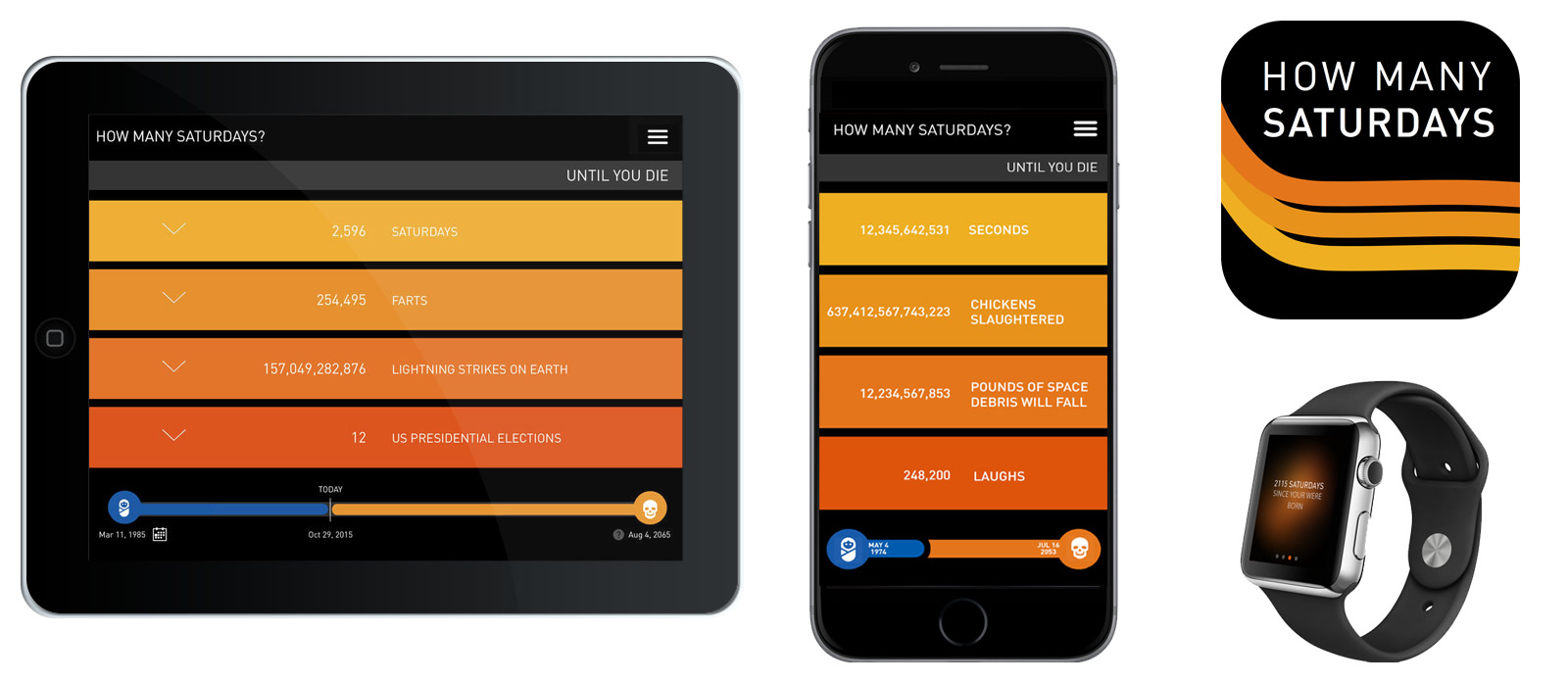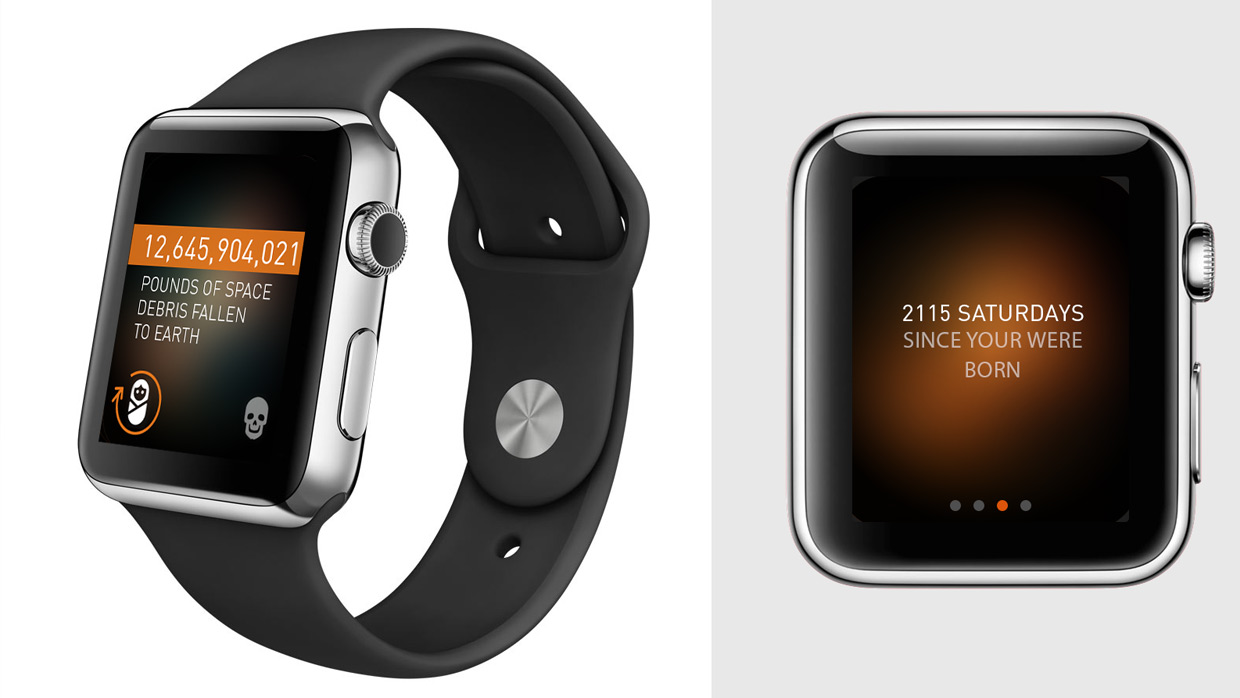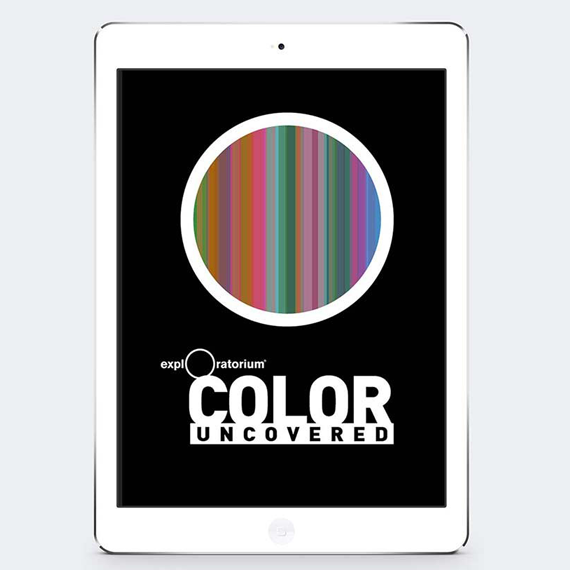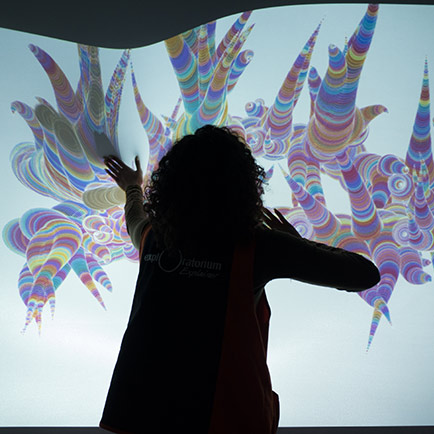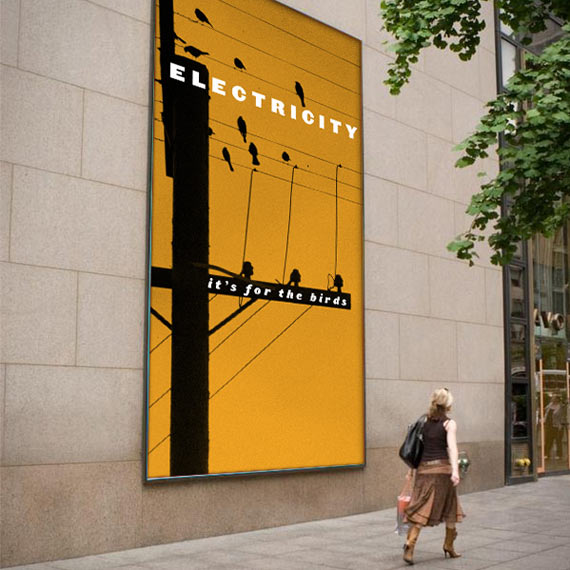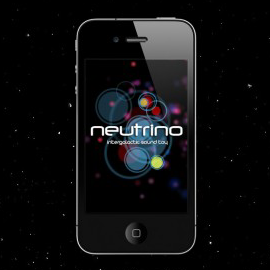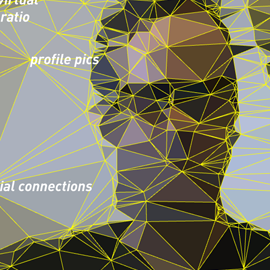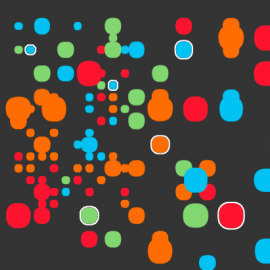How Many Saturdays?
Date Created
2015
Project Team Size
4
Skills Used
Rapid Prototyping, Product Development, Native Applications, Interaction Design, Interface Design, Usability Testing, Video Editing, Photography, Animation
"Simple, playful and gorgeously designed, the iPad app is intended to encourage users to think about time in different ways."
Glenn McDonald discovery.com
While we were exploring the concept of Time as the focus of a different project, the Exploratorium’s Creative Application group struck on a simple but powerful idea that grew into its own app: How Many Saturdays.
We designed How Many Saturdays as a way to personalize and visualize the passage of time. The app asks the user a few simple questions, and allows them to see estimated measures of their remaining lifespan: how many Saturdays are remaining in their life; how many presidential elections; how many blue moons, how many hours watching TV, and so on.
“Get ready to be amazed and creeped out all at the same time. "
Audrey Browning burntx.com
Designing an experience around how much time we have left before we die is a challenge. The app speaks of mortality without being morbid, with a UI that feels light but not cartoonish, serious but not callous, warm but still scientific. In face-to-face user testing, users displayed a feeling of curiosity, followed by shock, and moments of true discovery, humor, and engagement. App Store reviews ranged from hostile, “remove this from the App Store immediately” to extremely positive, “It gives a different perspective to one's life.”
Ultimately the app was more about living than about dying. Beyond the curiosity and even the hint of fear, we wanted to create a moment of contemplation, a new sort of clock, a chance to re-imagine our lives as the overlapping of many different cycles and different scales of time, from the short life of a mayfly to the inch-by-inch shifting of Mount Everest.
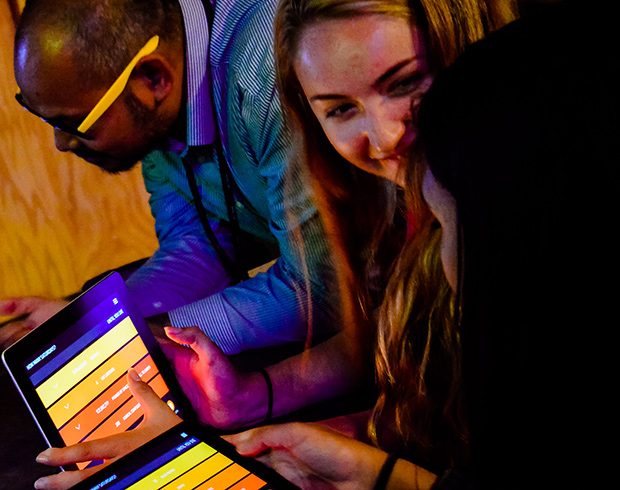
App Description
Stop and think a minute: How do you account for the passage of time in your life?
Standard units of time like seconds, hours, days, months, and years chop up time into chunks that seem sensible. But they have little to do with time as we actually experience it.
In practice, we also mark the time of our lives by other, much more personal units—in pet turtles, girlfriends, backpacks, softball gloves, hairstyles, graduations, wallets, phone numbers. The time units we choose say a lot about what we value.
But here’s an experiment: What if you were to measure the time of your life in other, very different units? Does life feel shorter? Longer? More absurd? More precious?
Now’s the time to find out. And if you happen to be a mayfly, we suggest you hurry up.

